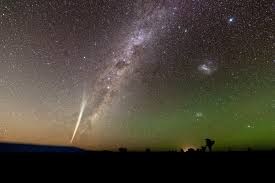With several groups planning to build human settlements in Mars, once the technology is available, it would not be far that Earthlings would aim for other celestial bodies such as comets for habitation or to harvest minerals.
In one comet, Lovejoy, it is not minerals that are available but alcohol and sugar. TechTimes reports that in this comet, which passes Earth only once every 8,000 years, it releases alcohol equivalent to at least 500 bottles of wine every second, says Nicolas Biver of the Paris Observatory in France.
Besides ethyl alcohol, Lovejoy also releases glycolaldehyde, a sugar compound, says the study published in the Science Advances journal in which Biver is the lead author. The two elements were identified by researchers in a mass of iced water in the comet.
While comets are usually made of rock, iced water and dust particles, it could also contain a variety of chemicals. But so far, Lovejoy is the only comet discovered to have traces of alcohol and sugar. The discovery of these organic materials in comets could help provide a better understanding on how planets originated and living organisms on these bodies, says Dominique Bockelee-Morvan, astrophysicist at the French National Center for Scientific Research.
The last time that Lovejoy was visible on the Earth's night sky was on Jan. 30, 2015. To see that comet, scientists used a 30-meter radio antenna on the Institut de Radioastronomie Milllimetrique in Spain to gather spectrographic studies of chemicals on the comet. The next time that Lovejoy would again be visibly on Earth would be in 10015.
The comet was first spotted in August 2014 by amateur astronomer Terry Lovejoy from Australia which explains how it got its name, explains Time.



























